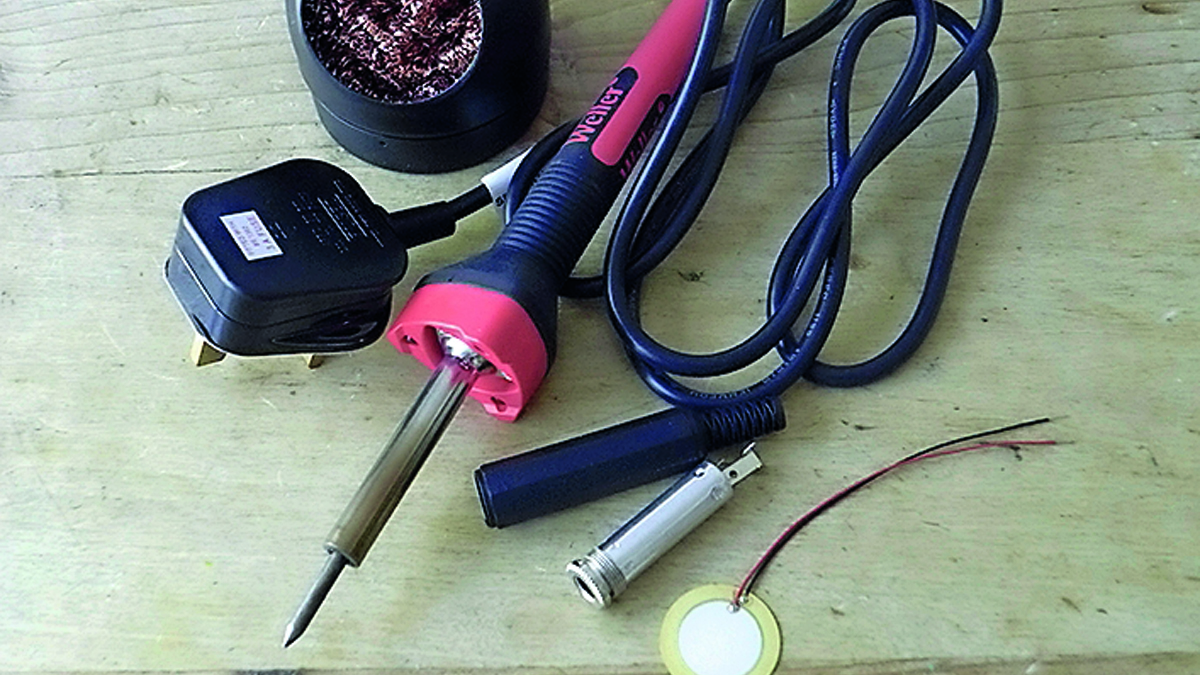How to make a contact mic
Make your own inexpensive contact mic with some very simple soldering of a piezo to an output. Here's how…

At its most basic a piezo conducer can be wired directly to an output socket to make a contact mic or acoustic trigger.
All you need is a piezo element (found very cheaply in any electronics store or online) a mono output socket (1⁄4-inch jack/mini jack/RCA, it really doesn't matter which you prefer), a soldering iron and some solder. Instead of the socket you can use a cable ending in a jack plug. We prefer to use a socket as the length of cable we can use isn't restricted, although it can be harder to tape the bulkier socket onto the target surface.
This type of inexpensive contact mic won't reproduce a wide range of frequencies but for a first go, sonic experimentation purposes or use as a drum trigger it will do just fine (and of course it only costs a couple of pounds).

Step 1: Get your parts together and take the output socket apart to reveal the contact terminals. Obviously, a soldering iron gets very hot so take due care.

Step 2: Solder the red wire from the piezo to the tip (or hot) connection on the socket (the middle one) and the black to the ground or sleeve (the outside connector). These wires can be quite small and fiddly depending on the size of the piezo, so take your time.

Step 3: To make your piezo more sturdy, cover the wires in a protective layer of electrical tape or heat shrink tubing (put this over the bare wires first) and cover the connections on the piezo with a layer of tape or glue. Add wire in between the piezo and socket to add some more length. Now get experimenting.
Want all the hottest music and gear news, reviews, deals, features and more, direct to your inbox? Sign up here.
Future Music is the number one magazine for today's producers. Packed with technique and technology we'll help you make great new music. All-access artist interviews, in-depth gear reviews, essential production tutorials and much more. Every marvellous monthly edition features reliable reviews of the latest and greatest hardware and software technology and techniques, unparalleled advice, in-depth interviews, sensational free samples and so much more to improve the experience and outcome of your music-making.
